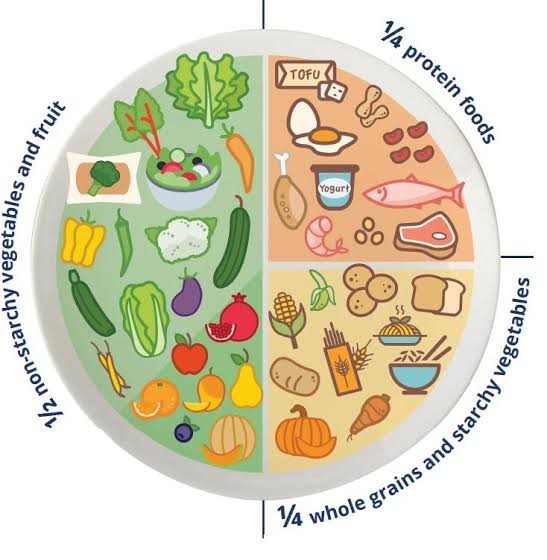By Nutriworld | Dt. Dipanwita Saha
Diabetes is becoming more common around the world, and in India, nearly 7% of the population is affected. Managing diabetes means being mindful of your diet to keep your blood sugar levels in check. However, with so much information out there, it’s easy to get tangled up in myths and misconceptions about what you can and can’t eat. In this article, we’ll clear up 7 common diabetic diet myths that you really should ignore.

Myth 1: People with diabetes need to follow a special diet
Fact : The truth is, the diet for those with diabetes is pretty much the same as for everyone else. A healthy, balanced diet that’s rich in nutrients and low in fat and calories is key. This includes all food groups:
– Carbohydrates like whole grains such as whole wheat, brown rice, barley, oats, quinoa, and millets.
– A variety of vegetables and fruits.
– Protein sources like lean meats, chicken, turkey, fish, eggs, beans, pulses, legumes, and low-fat dairy like skimmed milk and yogurt.
– Healthy fats from nuts and seeds, but in moderation.
It’s best to steer clear of foods high in unhealthy fats, like fried snacks, as well as those loaded with sodium,(salt) such as pickles, papads, sauces, and sugary treats like cakes, pastries, soft drinks,juices. These guidelines are pretty much what everyone should be aiming for!
Myth 2: If you’re on medication, you can eat whatever you want.
Fact: Just because you’re taking diabetes medication doesn’t mean you can indulge in anything and everything. While it’s crucial to take your medication as directed, it’s equally important to stick to a nutrient-rich diet. Eating well not only helps you manage your diabetes over time but also keeps other potential health issues at bay, like heart disease and high blood pressure. Regularly consuming high-sugar and high-fat foods or large portions can hinder your medication’s effectiveness and make it harder to control your blood sugar.
Myth 3: If you have diabetes, you should avoid fruit because it's sweet.
Fact: The truth is, there are no forbidden fruits when it comes to a diabetes-friendly eating plan. Many whole fruits, while containing natural sugars, are also packed with nutrients and fiber. With the right serving size, you can enjoy all kinds of fruits as part of your meals or snacks.
It’s a good idea to choose fruits that are lower in sugar, such as berries, apples, oranges, peaches, sweet limes, grapefruits, watermelon,papaya. While some fruits do have higher natural sugar content, you can still indulge in 2 servings (about 100 to 150 grams) per day as long as you stick to the proper portion sizes. Just remember to steer clear of fruit juices, avoid having two servings of fruit in the same meal, and whenever possible, eat fruits with their skin on.
Myth 4: If one is diabetic he should avoid rice
Fact: Carbohydrate-rich foods, especially starchy ones like rice, bread, noodles, and cereals, are a key part of our body’s energy source. All foods eventually break down into glucose, which is the body’s preferred energy source. Some foods may cause blood sugar levels to spike faster than other
While brown rice is generally a healthier choice than white rice because it has more fiber, white rice can still be enjoyed if you keep a few guidelines in mind. Here are some
Tips To Consider:
- When you eat white rice, try to pair it with proteins and lots of vegetables. For example, you might enjoy paneer biryani with some veggie raita or egg biryani alongside a fresh salad.
- Avoid mixing white rice with unhealthy carbohydrates, like bread or maida rotis.
- Steer clear of combining white rice with unhealthy fats, such as rice-based pakoras.
- Cook your rice in plenty of water, and remember to drain the excess water afterward to get rid of some of the starch
- In a day restrict yourself to 1 or 2 serving per day. It should not be poha ( flattened rice )in breakfast curd rice in lunch murmura (puffed rice) in snack and briyani in dinner
Myth 5: Foods that are labeled sugar free for diabetics are healthy and calorie free.
Fact : Just because a food is labeled as sugar-free doesn’t mean it’s healthy or calorie-free. Many products like chocolates, cakes, and biscuits aimed at people with diabetes might not contain sugar, but that doesn’t automatically make them a smart choice. They can still be high in fats, carbs, and calories, which can raise your blood sugar levels. Plus, the sweeteners used can sometimes have a laxative effect if consumed in large amounts. Using artificial sweeteners occasionally is usually fine, but don’t be fooled by marketing gimmicks.
Myth 6: Bitter-tasting foods can help lower blood glucose levels. starchy vegetables like potatoes are off-limits and should be avoided.
Fact: Unfortunately, that’s not true! While foods like bitter gourd might have their benefits, they won’t actually lower your blood glucose levels. Your blood sugar is primarily influenced by how many carbohydrates you eat. The real secret to managing your blood glucose is understanding your unique carbohydrate needs and sticking to them.
Vegetables like potatoes, yams, and tapioca have a higher starch content, which can turn into glucose in your body. Eating too much starch might lead to a spike in your blood sugar levels. The trick is to watch your portion sizes. Instead of having a potato bhaji with chapatis, consider other veggies that include potatoes in smaller amounts, like a ladies finger and potato subji or a mixed vegetable dish with a bit of potato. Add some protein when you’re eating starchy foods! Pairing your potatoes with mixed vegetables, dal, or yogurt, along with some salads, is a great way to balance your meal. These simple tips can really help you manage your blood sugar effectively. This way, you can help keep your blood sugar levels more stable after meals. So, if you’re on a diabetic diet, you can include potatoes, but just in moderation.
Myth 7: It’s fine to indulge in my favorite sweets when I have hypoglycemia (low blood sugar).
Fact: When you experience hypoglycemia, it’s crucial to treat it properly with just 15-20 grams of fast-acting carbohydrates, like juice, soft drinks, sugar, or specific jellied sweets. It’s not a free pass to binge on sugary treats! Overdoing it can lead to a spike in your blood glucose levels, which is the last thing you want.
By busting these 7 common diabetes diet myths, you can kickstart your journey to better health and effectively manage your diabetes.

- Focus on nutrient-dense whole foods.
- Get a handle on portion control.
- Remember, moderation is key.
- Enjoy balanced meals—don’t swing from fasting to feasting.
- Steer clear of sugary foods like sweets, chocolates, candies, soft drinks, cakes, and pastries. Don’t let your taste buds take control!
- And don’t forget to consult with a registered dietitian or nutritionist to create a personalized diet plan that suits your needs.
With the right mindset and approach, you can take charge of your diabetes and lead a healthy, fulfilling life!
By Aparna Panjwani Registered dietitian



